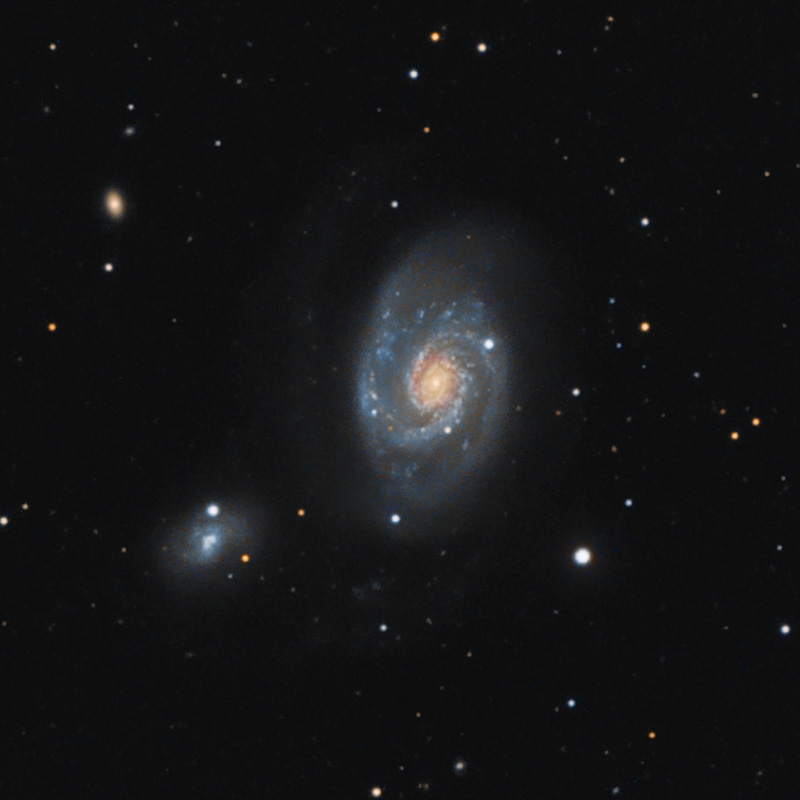| Description | Images |
Object name: NGC3893Designation(s): NGC3893, NGC3996, NGC 3893 and NGC 3896 are a pair of interacting galaxies in Ursa Major some 50 to 65 million light-years distant depending on which estimate you trust. Redshift says about 54 million light-years for NGC 3893 and 51 million light-years for NGC 3896. NED classes NGC 3893 as SAB(rs)c: though some notes at NED say they can't detect the bar. Neither can the NGC Project as they say Sc I. It has a lot of HII regions but MOST show blue rather than HII pink in my image. My color data was weak so that might be responsible. Also, 2" resolution may be needed to see THEM and I had far less than that. NGC 3896 is classed by NED as SB0/a: pec by NED and SB0-a by NED. It appears to be a mess to me. I see no real structure but my seeing wasn't very good. There appears to be some tidal debris south of NGC 3893. Most of this appears to me to have come from NGC 3896 reducing it to the mess it is today. They were discovered by William Herschel on February 9, 1788. NGC 3893 is in the original H400 program. My log from that on the night of May 4, 1984 using a 12.5" f/5 scope at up to 150x on an excellent desert night reads: "Interesting spiral with much detail though ill-defined nucleus. Four other faint galaxies are seen in the same 50x field. Seems to be about 10-11th magnitude." Related Designation(s):21P 151, 2MASS J11483817+4842394, 2MASS J11574605+1417505, 2MASX J11483820+4842388, 2MASX J11574605+1417507, 2MASXi J1157460+141750, 6C B114600.1+485941, 87GB 114556.6+485903, 87GB[BWE91] 1145+4858, AKARI J1148380+484244, ALFALFA 1-066, ASK 436670.0, CGCG 098-011, CGCG 1146.0+4859, CGCG 1155.2+1435, CGCG 243-008, ECO 03207, GB6 J1148+4842, HDCE 0706 NED006, HOLM 293A, IRAS 11460+4859, IRAS 11551+1434, IRAS F11459+4859, IRAS F11551+1434, KPG 302A, LDCE 0867 NED038, LGG 258:[G93] 016, MCG +03-31-004, MCG +08-22-007, NGC 3893, NGC 3996, NGC3893, NGC3996, NSA 140283, NSA 169819, NVSS J114837+484242, NVSS J115746+141752, PGC 036875, PGC 037628, SDSS J115746.05+141750.6, SDSS J115746.05+141750.7, SDSS J115746.06+141750.7, UGC 06778, UGC 06941, UMa Cluster:[PRL2014] U035, UNAM-KIAS 0828, UZC J114838.2+484239, UZC J115746.1+141752, [M98j] 170 NED08, [PJY2015] 587735347499106307 , [RHM2006] SFGs 046, [SUV2010] 459, [WB92] 1145+4858, | Permanent link: https://images.mantrapskies.com/catalog/NGC/NGC3893-NGC3996/NGC3893L4X10RGB2X10D-ID.JPG |


